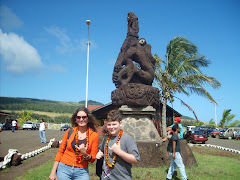Sea and Survival
Why do people continue to build in or near areas that are constantly barraged by forces of nature? I am always amazed that after floods, hurricanes, volcanos, mud slides and tornados, people rebuild their homes as if that was the one and only time this would ever happen and they are exempt from it ever happening again. When homes are built on unstable ground or near a coast prone to hurricanes or serious erosion, their owners are asking for problems. After a high insurance claim, many homes are deemed "uninsurable" yet people continue to rebuild. I do agree with these graduate students that these "lessons...need to be incorporated into ordinance," in order that we do not pay the high price (in our insurance policies) for these "ecological lessons" (17)
 Below is a link I found with the song "Old Cape Cod," sung by Jerry Vale, along with a beautiful slide show. I lived on the Cape with my boyfriend and child in 1979 and it was the most beautiful experience of my life. I loved the dunes; back in those days one could walk for miles or run on them. Now it is prohibited in order to prevent erosion of the cliffs and to protect the plant species that grow in the primary dunes. I lived next to the Highland Lighthouse of Truro and was friends with the lighthouse keeper so was fortunate to have been able to go in
Below is a link I found with the song "Old Cape Cod," sung by Jerry Vale, along with a beautiful slide show. I lived on the Cape with my boyfriend and child in 1979 and it was the most beautiful experience of my life. I loved the dunes; back in those days one could walk for miles or run on them. Now it is prohibited in order to prevent erosion of the cliffs and to protect the plant species that grow in the primary dunes. I lived next to the Highland Lighthouse of Truro and was friends with the lighthouse keeper so was fortunate to have been able to go in side on several occasions.
side on several occasions.The lighthouse was originally built 500 feet back from the edge of a 125 foot cliff (dune) in 1797. Due to erosion of an average of three feet per year (one year it eroded 40 feet due to a severe storm), by the 1990's it stood about 100 feet from the edge. With federal funds and money raised by concerned citizens, the Highland Light (as it is called by locals) was moved 450 feet from its original location in 1996.
Would this be considered a "simple ecological lesson" (17)?
http://www.youtube.com/watch?v=JdNcRuJ1vME




